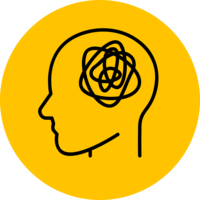BangladEsh Longitudinal Investigation of Emerging Vascular Events study (BELIEVE)
The BELIEVE study is a large-scale household-based prospective cohort study involving over 73,000 participants aged 11 years and older from urban (Mirpur-Dhaka), urban-poor (Bauniabadh-Dhaka), and rural (Matlab-Chandpur) settings in Bangladesh. Participants were recruited between January 2016 and March 2020 through household surveys and visits, where they completed structured questionnaires and underwent physical and biological assessments. Participants are followed up every 18 to 24 months through electronic questionnaires, household visits, and medical document collection to track both fatal and non-fatal health outcomes.
Study design
Cohort
Number of participants at first data collection
73,883 (participants)
Age at first data collection
≥ 11 years (participants)
Participant year of birth
Varied (participants)
Participant sex
All
Representative sample at baseline?
No
Sample features
Country
Year of first data collection
2016
Primary Institutions
Bangabandhu Sheikh Mujib Medical University
International Centre for Diarrhoeal Disease Research, Bangladesh (আন্তর্জাতিকউদরাময় গবেষণা কেন্দ্র, বাংলাদেশ, ICDDRB)
National Heart Foundation Hospital and Research Institute
University of Cambridge
Links
Profile paper DOI
Funders
British Heart Foundation
Health Data Research UK (HDRUK)
Medical Research Council (MRC)
NIHR Cambridge Comprehensive Biomedical Research Centre (BRC)
UK Research and Innovation (UKRI)
Ongoing?
Yes
Data types collected



- Interview – face-to-face
- Physical environment assessment (e.g. pollution, mould)
- Physical or biological assessment (e.g. blood, saliva, gait, grip strength, anthropometry)
- Secondary data
- Self-completed questionnaire – paper or computer assisted
- Interviews or focus groups
- None
- Healthcare data
Engagement
Keywords



